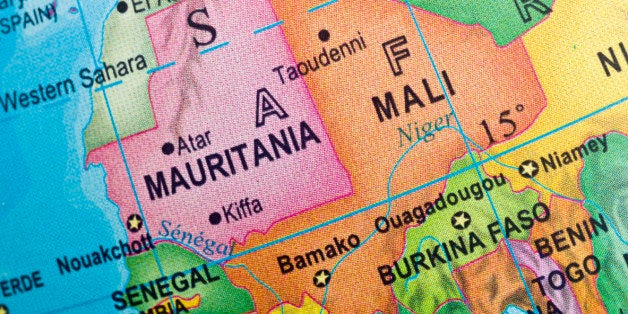
Political extremism and terror do not arise in a vacuum. They feed on human suffering and stagnant hopes. Examine Mali closely, because the conditions which have given rise to conflict and terrorism there are prevalent throughout many parts of the developing world. Mali is a cautionary tale.
Four years ago, before it became engulfed in conflict, Mali was not a country that evoked a lot of international concern. It tied with Bosnia and Herzegovina for 79th on the 2012 Failed States Index, right behind India. Despite a very high rate of poverty, no one would have described Mali as a hotbed of political extremism or a candidate for civil war. Yet, Mali today finds itself on the front lines of the global fight against terror. And what happened this week in Mali is happening in other developing countries that are struggling against great odds to alleviate poverty and human suffering.
The population of Mali, which was the fourth poorest country in the world last year according the UN's Multidimensional Poverty Index, is projected to rise from 16 million this year to over 45 million over the next 35 years. Already dependent upon emergency food assistance and imports of rice and wheat, Mali is food insecure. Even during the best of times, food security in Mali is considered fragile, but Mali is threatened by periodic droughts, and climate change forecasts suggest that droughts in Mali could become more frequent and more intense. In such environments, incipient political insurgencies can thrive, particularly if there are ethnic or religious divisions on which they can feed.
The same conditions that helped to destabilize Mali exist in some form in numerous developing countries. In recent years Islamic extremists have made substantial gains in sub-Saharan Africa. Boko Haram, whose terrorist toll rivals that of ISIS, has spilled out of Nigeria into other countries in the region, including Chad and Niger. In Burundi, the divisions are principally ethnic, not religious, but Burundi may be on the verge of a new round of genocidal violence in the wake of election disputes. Conflict stills rages, meanwhile, in eastern regions of the Democratic Republic of Congo (DRC), where remnants of the Lord's Resistance Army is still recruiting and training young boys to be killers.
The current conflict in Syria is the product of long-existing political and religious divisions, but it, too, has suffered from the strains of climate change and a rapidly growing population. Before the civil war broke out, a prolonged and severe drought in eastern Syria displaced more than a million farmers, adding to the demographic and political strain in that now war-torn country.
Earlier this year, the Population Institute released a report (Demographic Vulnerability: Where Population Poses the Greatest Challenges) that identified and ranked the 20 countries in the world that face the greatest demographic challenges as they apply to food, poverty, water scarcity, environmental degradation, and political instability. Mali made the list, but there were 17 other countries that were identified as having even greater demographic challenges.
The number one country on the list? South Sudan. Its population last year was 11.7 million, but it is projected to rise to nearly 40 million over the 35 years. Already struggling with severe poverty and chronic hunger, it suffers from conflict that shows no signs of abating. The population of Somalia, number two on the list of the most demographically vulnerable, is projected to increase from 11 million today to 27 million by 2050. Other countries in the top ten include Niger, Burundi, Eritrea, Chad, DRC, Afghanistan, Yemen, and Sudan.
Over the next 35 years world population is projected to increase by 2.5 billion people. The vast majority of that growth, about 97 percent, will occur in the developing world, and the bulk of it in the very poorest countries, the countries least equipped to deal with the needs and demands of a growing population. If conditions in these nations deteriorate because of conflict, climate change, corruption or other factors, ethnic, political, and religious insurgents will have large number of unemployed young people to enlist in their cause. The ensuing unrest, combined with food insecurity, could generate a growing tide of economic, political and environmental refugees that could destabilize entire regions and spread, eventually, to Europe and other safe havens. A global refugee crisis, in turn, will fuel xenophobic fears and exacerbate global tensions. Not a very reassuring picture.
It is in the best interests of Europe and the world at large to help developing countries deal with their demographic challenges. There are an estimated 222 million women in the developing world who want to avoid a pregnancy, but who are not using a modern method of contraception. In addition to ensuring that these women have improved access to modern contraceptives, the world should be doing more to help these countries educate girls and empower women, particularly where child marriage practices are still prevalent. Doing so would reduce fertility rates in these developing countries, while also fighting poverty, alleviating hunger and water scarcity, and reducing the demographic pressures that can contribute to political instability and even conflict.
Prudence dictates that the U.S. should be doing more, not less, but Congress may be on the verge of reducing its support for international family planning. Earlier this summer, the House Appropriations Committee voted to slash funding by $150 million, a cut of 25 percent. The Senate appropriators are resisting the proposed cutback, but the final outcome awaits a final resolution of the current budget impasse in Congress.
Bombing and defeating ISIS may ease the conflict in Syria and slow the current flow of refugees into Europe, but if the US and Europe ignore the demographic pressures that are contributing to the larger global unrest, Mali may be the shape of things to come, and a far larger refugee crisis may loom in the world's future.
